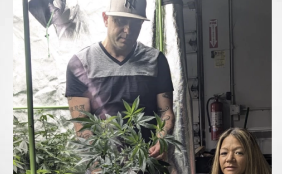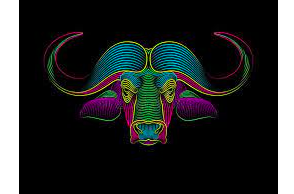Sometimes even the Federalist has a pertinent point…
The popularization of psychedelics has already transformed the American mind. As tripping becomes normalized and legal in the coming decade, the pace of change will only accelerate. There will be more openness to new ideas, both brilliant and insane. Commercial availability will also invigorate the market for synthetic religious experiences.
Having seen people gobble up hallucinogens in various contexts, I’m not particularly bothered by the substances themselves. The physical effects are negligible—fatality rates are basically zero—and many people derive real insight from their use. Certainly, a sizable minority become head-spun wackos, but compared to the utter devastation wrought by opiates, or even alcohol, it’s a peripheral concern.
What freaks me out is seeing bio-chemical divinity go mainstream. These fads make for interesting subcultures—generating elaborate art and hilarious stories—but could become monstrous in the hands of our current ruling class. Big Pharma’s track record is already abysmal, from the over-use of SSRI antidepressants to the ongoing opioid crisis.
Ego-driven psychiatrists and greedy doctors were at the front lines of these reckless promotional campaigns. Soon, the same community that prescribes hormone-blockers to confused kids and often portrays conservatism as a mental illness will be ordained to dispense spiritual experiences in a capsule. Shrinks will be licensed to interpret the “voice of God.”
A Prescription for Spirit Molecules
When talking about psychedelics, it’s important to distinguish one from the other. Some can be picked and eaten in the field (mushrooms, peyote), while others require processing (LSD, DMT). Here’s a very brief rundown, in order of intensity, assuming a moderate dose:
- Psilocybin – mushrooms; 6 hours; mild hallucinations
- Mescaline – peyote cactus; 6 hours; mild hallucinations
- LSD – ergot fungus; 8-12 hours; fairly intense hallucinations
- DMT – toad glands; 15-30 minutes; intense out-of-body hallucinations
Each has its own flavor—with huge variations from person to person—but all tend to evoke humor and a sense of spiritual wonder. Users often report a sense of oneness with Nature, deep insight into the mind, and lasting emotional catharsis. If the trip goes south, one confronts inner demons and existential terror.
Lasting side-effects may include delusional thinking and persistent anxiety. The worst outcome is when someone has a great time, talks about it incessantly, and insists that everyone in the world needs to give it a try.
Apparently, this messaging is working. A 2013 data analysis found that about 10 percent of Americans have tried mushrooms, LSD, or peyote. Youth experimentation is roughly the same level as peak Boomer use in the 1960s, and climbing fast. A more recent study found that between 2015 and 2018, LSD use alone had increased more than 50 percent. This craze has enormous momentum in Silicon Valley.

















